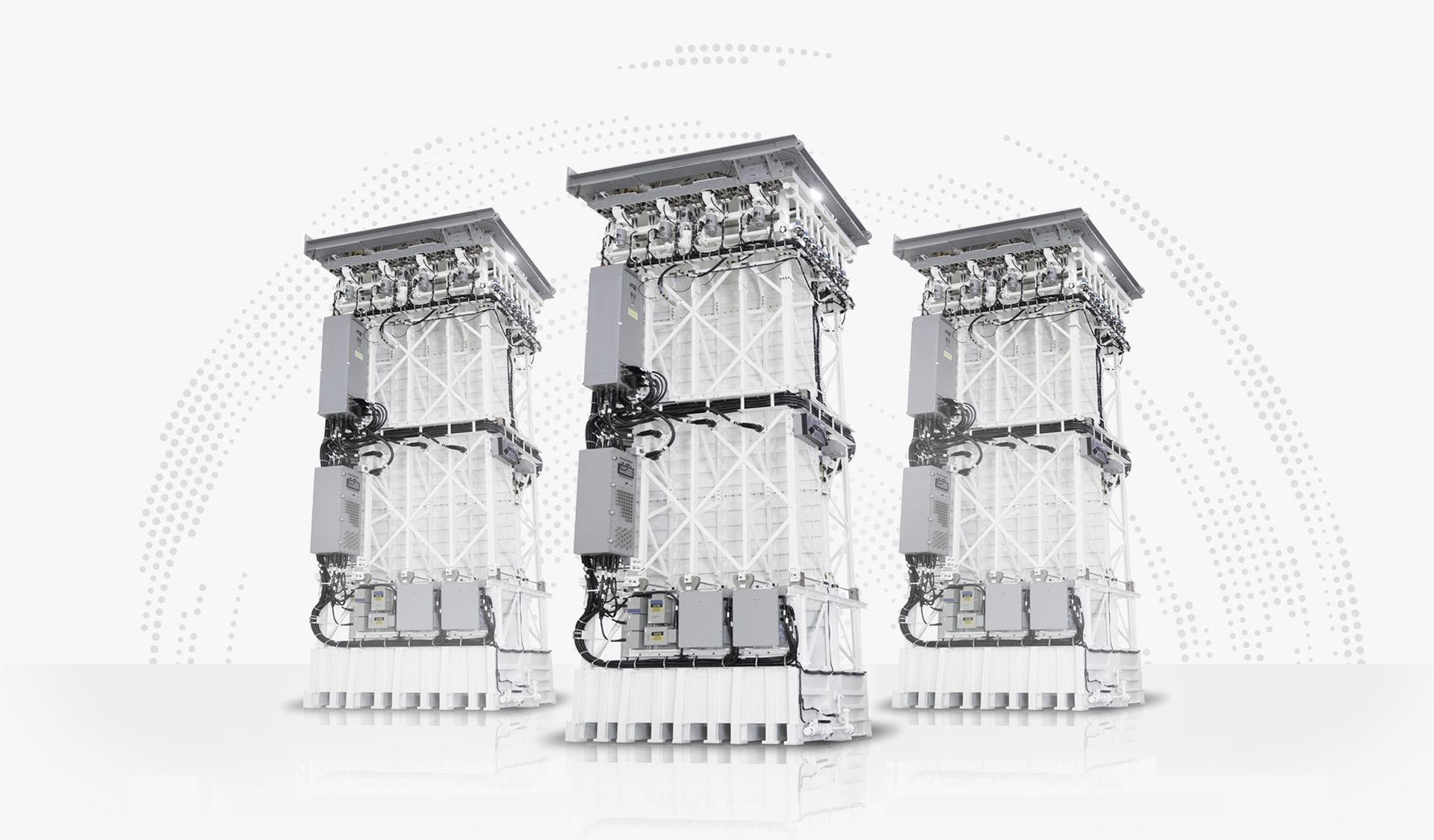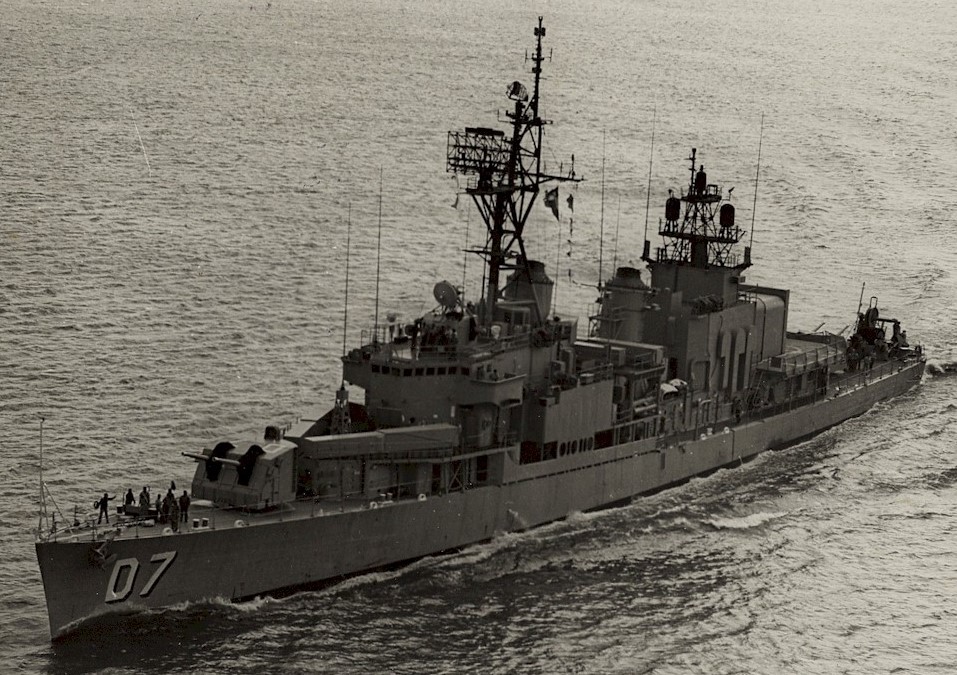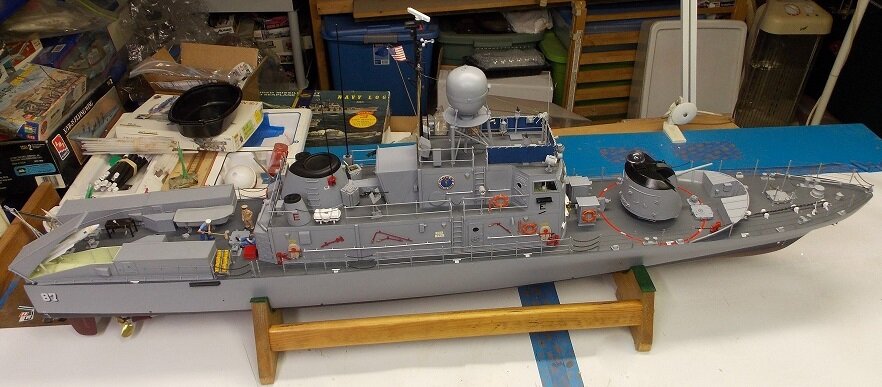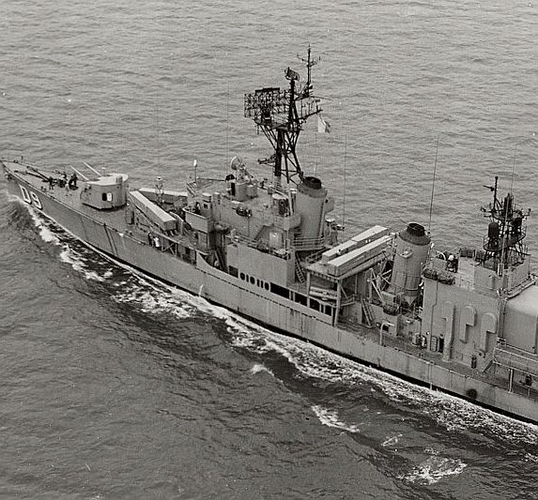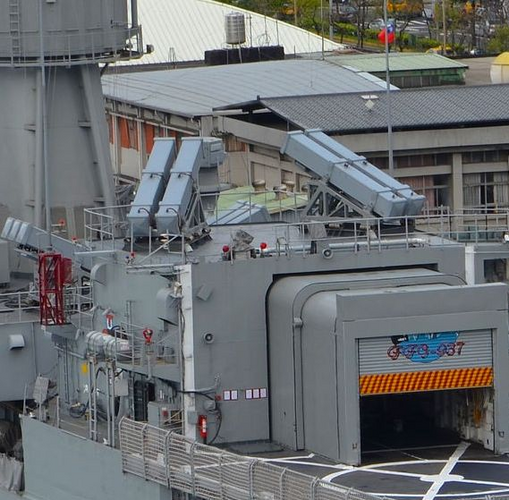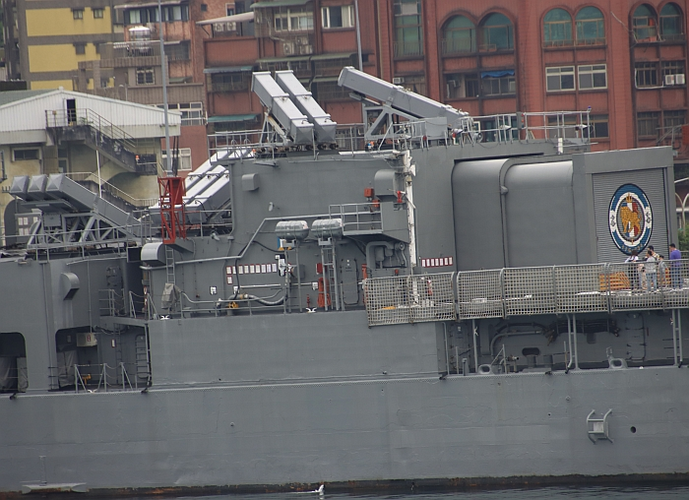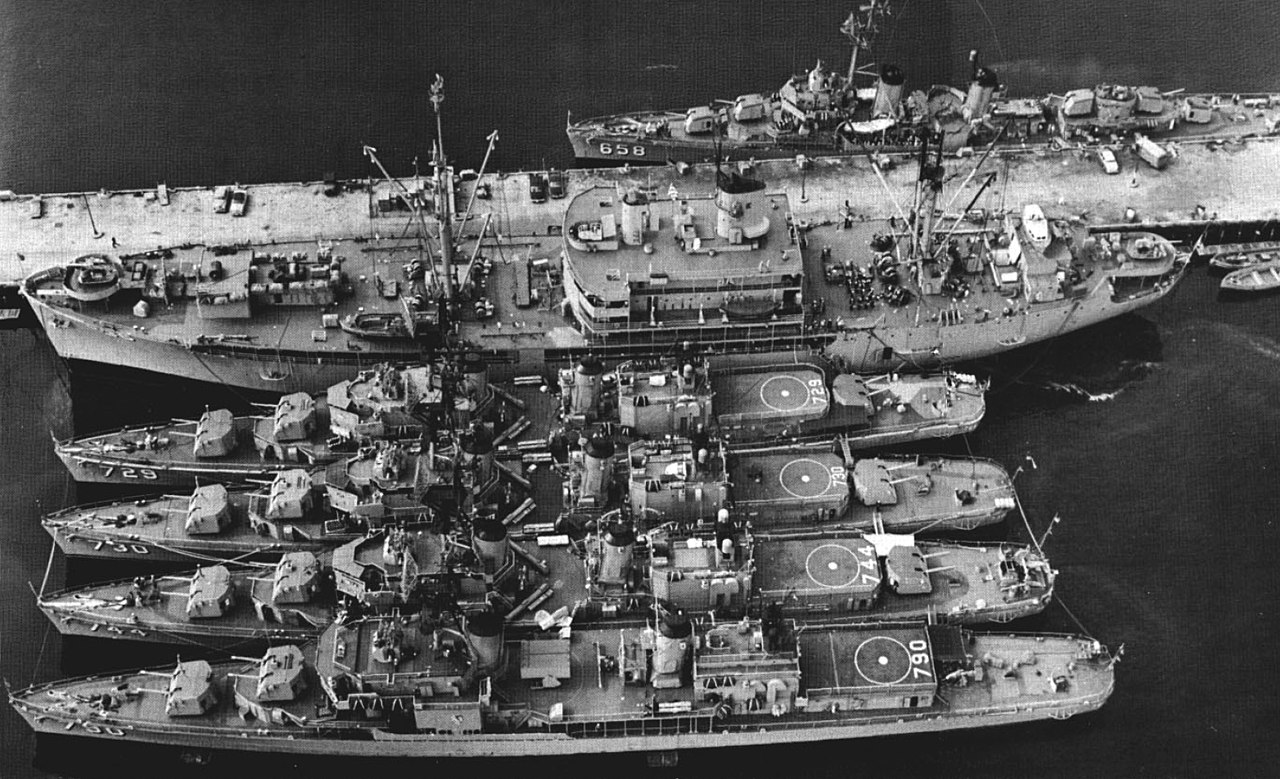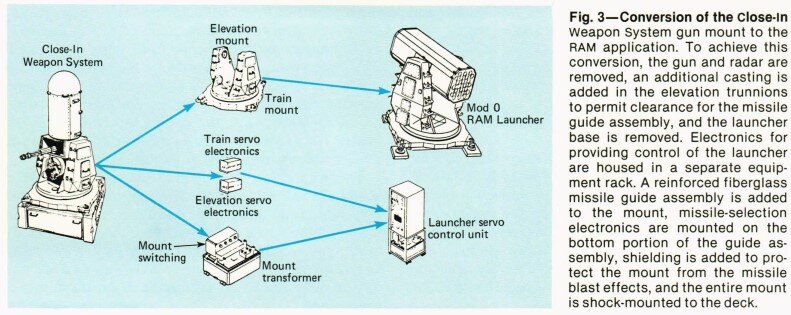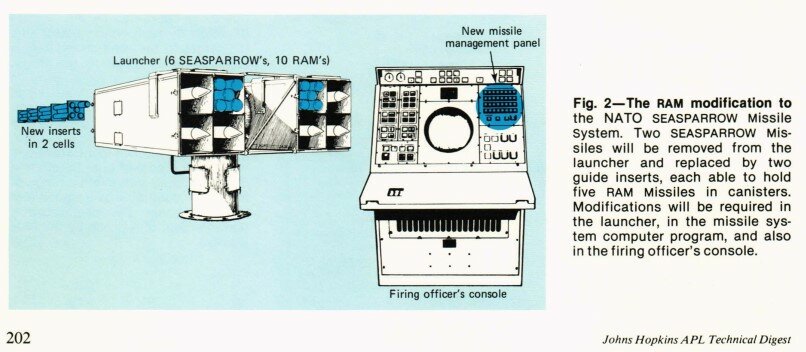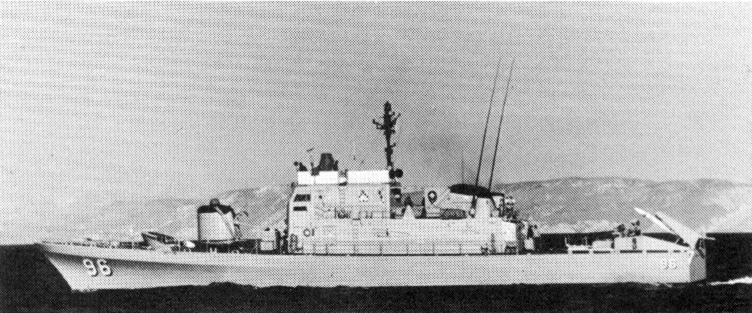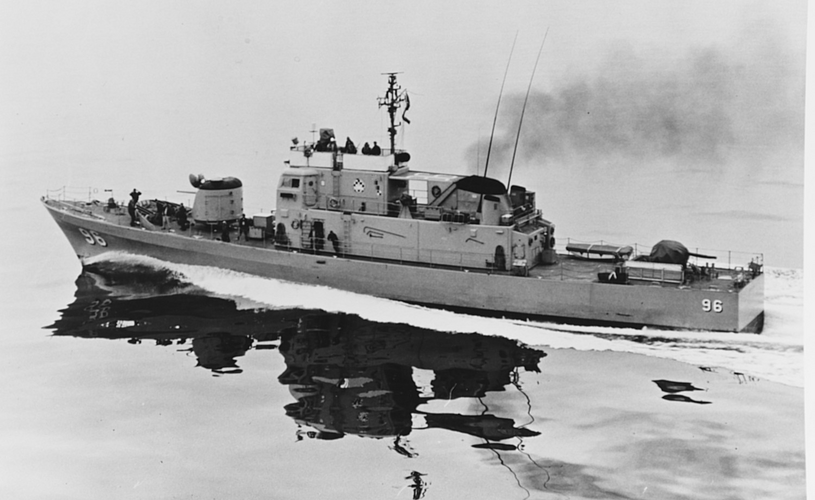- Joined
- 1 February 2011
- Messages
- 2,615
- Reaction score
- 2,591
I've thought I collect here the Guided Missile Launcher Systems or GMLS designations the US Armed forces used, mostly the navy but there seems to be many missing launcher designations and sequences.
If anybody knows more designations from the missing sequences feel free to post here or inform me and I've extend the list.
Here they are:
Mark 1 - Twin arm test launcher for the RIM-2 Terrier on the USS Mississippi
Mark 2 - Twin? arm test launcher and system for the RIM-2 Terrier
Mark 3 - Twin? arm test launcher and system for the RIM-2 Terrier
Mark 4 - Twin arm launcher for the RIM-2 Terrier used on the Boston class (Vertically loaded)
Mark 5 - Twin arm land based test launcher for RIM-2 Terrier, RIM-24 Tartar and RIM-66 and 67 Standard MR/ER used on the USS Desert Ship
Mark 6 - Unknown
Mark 7 - Twin arm launcher for the RIM-8 Talos used on the Galveston class (Above deck storage and horizontally loaded)
Mark 8 - Twin arm launcher for the RIM-2 Terrier used on the USS Gyatt (Above deck storage and horizontally loaded)
Mark 9 - Twin arm launcher for the RIM-2 Terrier used on the Providence class (Above deck storage and horizontally loaded)
Mark 10 - Twin arm launcher for the RIM-2 Terrier and RIM-67 Standard ER (Below deck storage and horizontally loaded)
Mark 11 - Twin arm launcher for the RIM-24 Tartar and RIM-66 Standard MR (Vertically loaded)
Mark 12 - Twin arm launcher for the RIM-8 Talos used on the USS Long Beach (Below deck storage and horizontally loaded)
Mark 13 - Single arm launcher for the RIM-24 Tartar, RIM-66 Standard MR and RGM-84 Harpoon (Vertically loaded)
Mark 14 - Single arm launcher for the RIM-55 Typhon MR (Vertical loaded) (One artist impression shows the launcher as an inverted Mark 13, eg the missile was held above the rail and not under it)
Mark 15 - 1/2-tube test launcher system for the RGM/UGM-27 Polaris
Mark 16 - 8 cell "Pepper Box" launcher for the RUR-5 ASROC and RGM-84 Harpoon (During development 2 cell and 12 cell versions were considered for the RAT and ASROC)
Mark 17 - 8/16-tube launcher system for the UGM-27 Polaris used on submarines
Mark 18-20 - Unknown
Mark 21 - 8/16-tube launcher system for the UGM-27C Polaris A-3 used on submarines
Mark 22 - Single arm launcher for the RIM-24 Tartar, RIM-66 Standard MR and RGM-84 Harpoon (Vertical loaded, Modified Mark 13)
Mark 23- Unknown
Mark 24 - 16-tube launcher system for the UGM-73 Poseidon used on submarines
Mark 25 - 8-cell (2-4-2) launcher for the RIM-7 Sea Sparrow / BPDMS (Horizontally manually loaded)
Mark 26 - Twin arm launcher for the RIM-66 Standard MR, RGM-84 Harpoon and RUR-5 ASROC (Vertical loaded)
Mark 27 - 1/2-tube launcher system for the Zuni Chaffroc system
Mark 28 - 1/2-tube launcher system for the Zuni Chaffroc system
Mark 29 - 8-cell (4-4) launcher for the RIM-7 NATO Sea Sparrow and RIM-162 Evolved Sea Sparrow (Horizontally manually loaded)
Mark 30 - 6-rail launcher for 5" Shore Bombardment Rocket used on the LSM(R) Class (Horizontally loaded)
Mark 31 - Unknown
Mark 32 - 1/2/4-cell launchers for the RIM-66 Standard MR used on sold Iranian and Taiwanese Ex USN Ships (Horizontally automatically loaded)
Mark 33 - 1/2-tube launcher system for 112mm Chaffroc system
Mark 34 - 2-tube launcher system for 112mm Chaffroc system used on the Pegasus class hydrofoils
Mark 35 - 16-tube launcher system for the UGM-96 Trident used on submarines
Mark 36 - 4-rail launcher for 5" Shore Bombardment Rocket used on the LSM(R) Class (Horizontally loaded)
Mark 37 - single-tube/rail launcher for the Mark 60 Mark 60 CAPTOR (Encapsulated Torpedo) used on surface ships
Mark 38 - single-tube/rail launcher for the Mark 60 Mark 60 CAPTOR (Encapsulated Torpedo) used on P-3 Orion aircraft
Mark 39 - single-tube/rail launcher for the Mark 60 Mark 60 CAPTOR (Encapsulated Torpedo) used on submarines
Mark 40 - Unknown
Mark 41 - Modular (8/16/32/40/61/64) Vertical Launch System for a large number of missile types (Vertically loaded)
Mark 42 - Unknown
Mark 43 - 24-cell launcher on an improved or modified SeaRAM/Phalanx Chassis for the RIM-116 Rolling Airframe Missile (Horizontally manually loaded)
Mark 44 - 4-cell/tube "Armoured Box" launcher for the BGM-109 Tomahawk (Horizontally manually loaded) (Re-designation?)
Mark 45 - Vertical Launch System for the UGM-84 Harpoon and UGM-109 Tomahawk used on submarines (Vertically loaded)
Mark 46-47 - Unknown
Mark 48 - Modular (2-4/6-12/16-32) Vertical Launch System for the RIM-7 VL Sea Sparrow and the RIM-162 Evolved Sea Sparrow (Vertically loaded)
Mark 49 - 21-cell launcher for the RIM-116 Rolling Airframe Missile (Horizontally manually loaded, there is also the SeaRAM a modified Mark 15 Phalanx mounting with a 11 cell launcher instead of the Gatling gun)
Mark 50 - 8-tube launcher for 5" Shore Bombardment Rocket used on PT Boats (Horizontally loaded)
Mark 51-52 - Unknown
Mark 53 - 2-4-cell launcher for the Nulka anti-missile decoy (Horizontally/Vertically manually loaded)
Mark 54-55 - Unknown
Mark 56 - Modular (4/12/32) Vertical Launch System for the RIM-162 Evolved Sea Sparrow (Vertically loaded)
Mark 57 - 20-cell Peripheral Vertical Launch System for the RIM-162 Evolved Sea Sparrow, RGM-109 Tomahawk and RUM-139 VL-ASROC used on the Zumwalt class (Vertically loaded)
Mark 58-69 - Unknown
Mark 70 - 1-4-cell (2x2) Canister/Vertical Launch System for a large number of missile types, looks like simplified and modified Mark 41 (Vertically or Horizontally loaded)
Mark 71-86 - Unknown
Mark 87 - 4-cell (2x2) launcher for the RGM-84 Naval Strike Missile (Horizontally manually loaded)
Mark 88-101 - Unknown
Mark 102 - Twin launcher for 5" Shore Bombardment Rocket, designed for use on LSMR (Vertically loaded)
Mark 103-104 - Unknown
Mark 105 - Twin launcher for 5" Shore Bombardment Rocket used at least on the USS Carronade (Vertically loaded)
Mark 106-107 - Unknown
Mark 108 - Single launcher for RUR-4 Weapon Alpha (Vertically loaded)
Mark 109-131 - Unknown
Mark 132 - Modified Mark 29 8-cell launcher for Combined 6x RIM-7 NATO Sea Sparrow and 10x (2x5) RIM-116 Rolling Airframe Missiles (Horizontally manually loaded)
Mark 133-140 - Unknown
Mark 141 - 4-cell/tube launcher for the RGM-84 Harpoon (Horizontally manually loaded)
Mark 142 - Unknown
Mark 143 - 4-cell/tube "Armoured Box" launcher for the BGM-109 Tomahawk (Horizontally manually loaded)
Mark 144 - 21-cell launcher for the RIM-116 Rolling Airframe Missile (Horizontally manually loaded)
Note:
Not sure if there are visual differences between the Mark 7 and 12, Mark 9 and 10 as well as the Mark 13 and 14 launchers.
There is a system called the RAM Mark 31 Guided Missile Weapon System (GMWS) Which might be the full designation of the system and contains the Mark 144 launcher
If anybody knows more designations from the missing sequences feel free to post here or inform me and I've extend the list.
Here they are:
Mark 1 - Twin arm test launcher for the RIM-2 Terrier on the USS Mississippi
Mark 2 - Twin? arm test launcher and system for the RIM-2 Terrier
Mark 3 - Twin? arm test launcher and system for the RIM-2 Terrier
Mark 4 - Twin arm launcher for the RIM-2 Terrier used on the Boston class (Vertically loaded)
Mark 5 - Twin arm land based test launcher for RIM-2 Terrier, RIM-24 Tartar and RIM-66 and 67 Standard MR/ER used on the USS Desert Ship
Mark 6 - Unknown
Mark 7 - Twin arm launcher for the RIM-8 Talos used on the Galveston class (Above deck storage and horizontally loaded)
Mark 8 - Twin arm launcher for the RIM-2 Terrier used on the USS Gyatt (Above deck storage and horizontally loaded)
Mark 9 - Twin arm launcher for the RIM-2 Terrier used on the Providence class (Above deck storage and horizontally loaded)
Mark 10 - Twin arm launcher for the RIM-2 Terrier and RIM-67 Standard ER (Below deck storage and horizontally loaded)
Mark 11 - Twin arm launcher for the RIM-24 Tartar and RIM-66 Standard MR (Vertically loaded)
Mark 12 - Twin arm launcher for the RIM-8 Talos used on the USS Long Beach (Below deck storage and horizontally loaded)
Mark 13 - Single arm launcher for the RIM-24 Tartar, RIM-66 Standard MR and RGM-84 Harpoon (Vertically loaded)
Mark 14 - Single arm launcher for the RIM-55 Typhon MR (Vertical loaded) (One artist impression shows the launcher as an inverted Mark 13, eg the missile was held above the rail and not under it)
Mark 15 - 1/2-tube test launcher system for the RGM/UGM-27 Polaris
Mark 16 - 8 cell "Pepper Box" launcher for the RUR-5 ASROC and RGM-84 Harpoon (During development 2 cell and 12 cell versions were considered for the RAT and ASROC)
Mark 17 - 8/16-tube launcher system for the UGM-27 Polaris used on submarines
Mark 18-20 - Unknown
Mark 21 - 8/16-tube launcher system for the UGM-27C Polaris A-3 used on submarines
Mark 22 - Single arm launcher for the RIM-24 Tartar, RIM-66 Standard MR and RGM-84 Harpoon (Vertical loaded, Modified Mark 13)
Mark 23- Unknown
Mark 24 - 16-tube launcher system for the UGM-73 Poseidon used on submarines
Mark 25 - 8-cell (2-4-2) launcher for the RIM-7 Sea Sparrow / BPDMS (Horizontally manually loaded)
Mark 26 - Twin arm launcher for the RIM-66 Standard MR, RGM-84 Harpoon and RUR-5 ASROC (Vertical loaded)
Mark 27 - 1/2-tube launcher system for the Zuni Chaffroc system
Mark 28 - 1/2-tube launcher system for the Zuni Chaffroc system
Mark 29 - 8-cell (4-4) launcher for the RIM-7 NATO Sea Sparrow and RIM-162 Evolved Sea Sparrow (Horizontally manually loaded)
Mark 30 - 6-rail launcher for 5" Shore Bombardment Rocket used on the LSM(R) Class (Horizontally loaded)
Mark 31 - Unknown
Mark 32 - 1/2/4-cell launchers for the RIM-66 Standard MR used on sold Iranian and Taiwanese Ex USN Ships (Horizontally automatically loaded)
Mark 33 - 1/2-tube launcher system for 112mm Chaffroc system
Mark 34 - 2-tube launcher system for 112mm Chaffroc system used on the Pegasus class hydrofoils
Mark 35 - 16-tube launcher system for the UGM-96 Trident used on submarines
Mark 36 - 4-rail launcher for 5" Shore Bombardment Rocket used on the LSM(R) Class (Horizontally loaded)
Mark 37 - single-tube/rail launcher for the Mark 60 Mark 60 CAPTOR (Encapsulated Torpedo) used on surface ships
Mark 38 - single-tube/rail launcher for the Mark 60 Mark 60 CAPTOR (Encapsulated Torpedo) used on P-3 Orion aircraft
Mark 39 - single-tube/rail launcher for the Mark 60 Mark 60 CAPTOR (Encapsulated Torpedo) used on submarines
Mark 40 - Unknown
Mark 41 - Modular (8/16/32/40/61/64) Vertical Launch System for a large number of missile types (Vertically loaded)
Mark 42 - Unknown
Mark 43 - 24-cell launcher on an improved or modified SeaRAM/Phalanx Chassis for the RIM-116 Rolling Airframe Missile (Horizontally manually loaded)
Mark 44 - 4-cell/tube "Armoured Box" launcher for the BGM-109 Tomahawk (Horizontally manually loaded) (Re-designation?)
Mark 45 - Vertical Launch System for the UGM-84 Harpoon and UGM-109 Tomahawk used on submarines (Vertically loaded)
Mark 46-47 - Unknown
Mark 48 - Modular (2-4/6-12/16-32) Vertical Launch System for the RIM-7 VL Sea Sparrow and the RIM-162 Evolved Sea Sparrow (Vertically loaded)
Mark 49 - 21-cell launcher for the RIM-116 Rolling Airframe Missile (Horizontally manually loaded, there is also the SeaRAM a modified Mark 15 Phalanx mounting with a 11 cell launcher instead of the Gatling gun)
Mark 50 - 8-tube launcher for 5" Shore Bombardment Rocket used on PT Boats (Horizontally loaded)
Mark 51-52 - Unknown
Mark 53 - 2-4-cell launcher for the Nulka anti-missile decoy (Horizontally/Vertically manually loaded)
Mark 54-55 - Unknown
Mark 56 - Modular (4/12/32) Vertical Launch System for the RIM-162 Evolved Sea Sparrow (Vertically loaded)
Mark 57 - 20-cell Peripheral Vertical Launch System for the RIM-162 Evolved Sea Sparrow, RGM-109 Tomahawk and RUM-139 VL-ASROC used on the Zumwalt class (Vertically loaded)
Mark 58-69 - Unknown
Mark 70 - 1-4-cell (2x2) Canister/Vertical Launch System for a large number of missile types, looks like simplified and modified Mark 41 (Vertically or Horizontally loaded)
Mark 71-86 - Unknown
Mark 87 - 4-cell (2x2) launcher for the RGM-84 Naval Strike Missile (Horizontally manually loaded)
Mark 88-101 - Unknown
Mark 102 - Twin launcher for 5" Shore Bombardment Rocket, designed for use on LSMR (Vertically loaded)
Mark 103-104 - Unknown
Mark 105 - Twin launcher for 5" Shore Bombardment Rocket used at least on the USS Carronade (Vertically loaded)
Mark 106-107 - Unknown
Mark 108 - Single launcher for RUR-4 Weapon Alpha (Vertically loaded)
Mark 109-131 - Unknown
Mark 132 - Modified Mark 29 8-cell launcher for Combined 6x RIM-7 NATO Sea Sparrow and 10x (2x5) RIM-116 Rolling Airframe Missiles (Horizontally manually loaded)
Mark 133-140 - Unknown
Mark 141 - 4-cell/tube launcher for the RGM-84 Harpoon (Horizontally manually loaded)
Mark 142 - Unknown
Mark 143 - 4-cell/tube "Armoured Box" launcher for the BGM-109 Tomahawk (Horizontally manually loaded)
Mark 144 - 21-cell launcher for the RIM-116 Rolling Airframe Missile (Horizontally manually loaded)
Note:
Not sure if there are visual differences between the Mark 7 and 12, Mark 9 and 10 as well as the Mark 13 and 14 launchers.
There is a system called the RAM Mark 31 Guided Missile Weapon System (GMWS) Which might be the full designation of the system and contains the Mark 144 launcher
Last edited:

